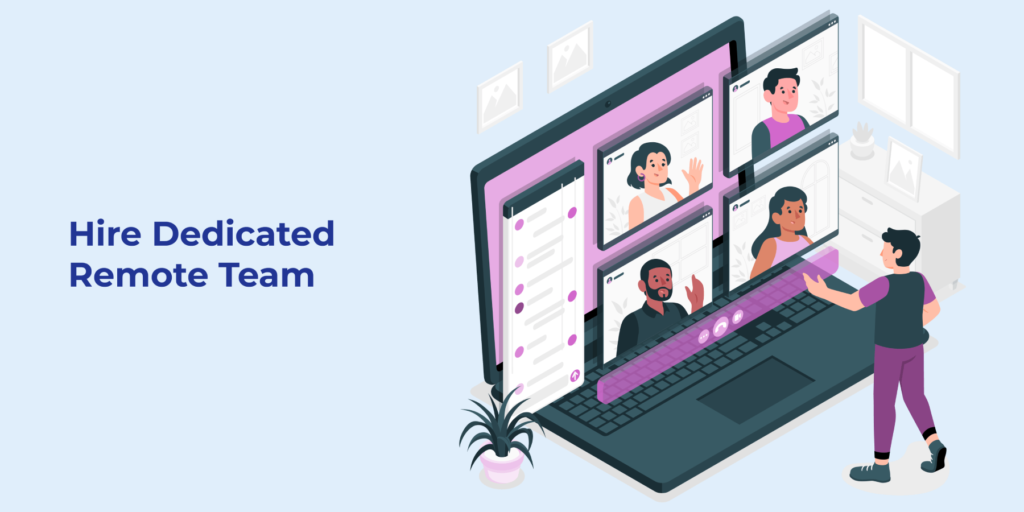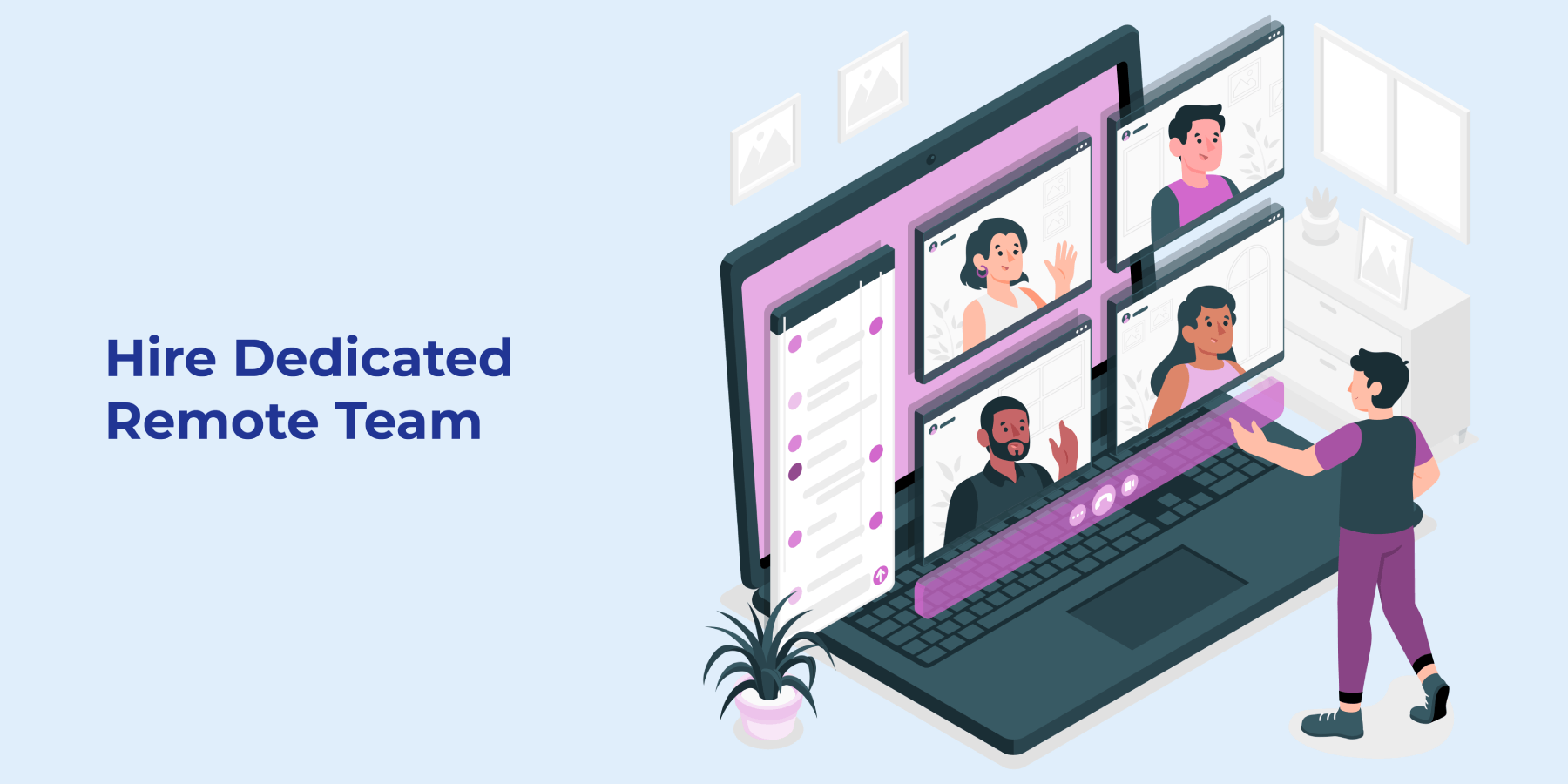
As remote work becomes increasingly prevalent, organizations must adapt their employee onboarding processes to suit the unique needs of remote employees. This article will delve into a 10-step onboarding checklist to ensure a seamless and effective transition for team members when you hire a dedicated remote team. From providing essential equipment to fostering a sense of belonging, these steps will set the stage for productive and engaged remote employees.
Let’s explore each step in detail and discover how to optimize your remote onboarding process.
1. Assessing and Sending IT Equipment
The foundation of remote work lies in reliable technology. When you hire a dedicated remote team, start by assessing the IT equipment required by the new employee, including computers, monitors, microphones, and a stable internet connection. Efficiently ship the necessary equipment to the employee’s location, ensuring they have the tools to perform their tasks seamlessly. When you hire a dedicated remote team, you create a robust infrastructure for their remote work experience by addressing these technical needs upfront.
2. Guiding New Employees through Paperwork
Remote employee onboarding involves navigating various paperwork requirements. After you hire a dedicated remote team, assist new hires in completing essential documents, such as tax residency information and legal hiring procedures. Communicate the company’s policies and procedures, ensuring compliance with regulations across different locations. Streamlining the paperwork process demonstrates your commitment to a smooth transition and sets a solid foundation for the working relationship.
3. Equipping Employees with Knowledge
Empower your remote employees with comprehensive company information after you hire a dedicated remote team. Give them information about its departments and key personnel. Provide an employee handbook that outlines policies, guidelines, and expectations. This resource should be a valuable reference, ensuring employees understand their roles and responsibilities. Consider supplementing this information with personalized guides like a manager’s handbook to foster effective collaboration and streamline organizational communication.
4. Setting up Software and Access
To enable smooth remote operations after you hire a dedicated remote team, ensure that all necessary software and tools are pre-installed on the employee’s computer. It includes email clients, communication platforms (such as Slack or Microsoft Teams), project management tools, and any job-specific software. Provide the employee with appropriate access permissions and login credentials to all relevant systems. This step minimizes delays and allows the new hire to hit the ground running.
5. Warm Welcomes and Introductions
Welcoming new employees after you hire a dedicated remote team is crucial for fostering a sense of belonging. Utilize push notifications, team meetings, and video calls to introduce the new hire to the company. Share relevant information about their role, department, and the person managing them. Encourage team members to engage with the new employee, helping them feel valued and integrated from day one. Building connections early on sets the stage for collaborative and supportive work relationships.
6. Training and Mentorship
Investing in proper training when you hire a dedicated remote team is essential to remote employee success. Establish a comprehensive training program that aligns with the employee’s role and responsibilities. Clearly define goals and expectations while implementing a buddy system or mentorship program. This pairing ensures new employees have a supportive resource to guide them through their initial stages and foster professional growth within the remote environment.
7. Setting Performance Goals
Define specific performance goals and expectations for each remote employee. Transparently communicate what is expected regarding productivity, quality, and deliverables. Ensure these goals are measurable and tied to key performance indicators (KPIs). Setting clear objectives when you hire a dedicated remote team provides remote employees with a roadmap for success. Regularly assess progress and provide constructive feedback to help them thrive in their roles.
8. Building a Remote Team Culture
Remote employee team-building activities are vital in fostering collaboration and camaraderie when you hire a dedicated remote team. Engage remote teams through virtual reality experiences, online games, and virtual team retreats. These activities facilitate connection, encourage knowledge sharing, and promote unity. Additionally, consider hosting in-person team meetings and company retreats when feasible. These face-to-face interactions strengthen bonds, enhance communication, and solidify the organizational culture.
9. Consistent Check-Ins and Support
Establish regular check-ins with remote employees to track progress, address concerns, and offer support. Schedule one-on-one calls with individual team members and hold meetings to ensure open communication channels. Encourage employees to share their accomplishments, challenges, and any roadblocks hindering their productivity. Consistent check-ins after you hire a dedicated remote team, foster a supportive environment and provide opportunities for collaboration, feedback, and professional growth.
10. In-Person Meetings and Retreats
Although remote work is the norm, in-person meetings, and retreats are valuable opportunities for personal connections. Organize team meetings and departmental gatherings periodically when you hire a dedicated remote team to encourage face-to-face interactions. Additionally, consider planning company-wide retreats to foster team bonding, facilitate strategic discussions, and align organizational goals. These occasions create a sense of unity, strengthen relationships, and help remote employees feel more connected to their colleagues and the company.
Conclusion
Mastering remote employee onboarding requires a strategic approach that addresses all the unique needs of remote workers. By following this 10-step checklist, organizations can ensure a seamless transition for new remote team members. These steps lay the foundation for productive and engaged remote employees. As remote work continues to shape the future of the workforce, implementing effective onboarding processes becomes crucial for organizations aiming to thrive in a remote-first environment.
Looking to hire a dedicated remote team? Look no further than Recruit Ninjas. With their expertise in sourcing and recruiting top remote talent, they can help you build a skilled and efficient team to meet your business needs. Take your remote workforce to the next level with Recruit Ninjas.
This blog is inspired by the video ‘10 Step Remote Employee Onboarding Checklist’ by ‘Running Remote.’
Anne Davis
Anne Davis, with a 19-year career at Vserve Ebusiness Solutions, currently leads as the Director of Sales and Marketing. Specializing in the eCommerce sector, she focuses on client relations, social media marketing, and email campaigns. Anne is dedicated to driving business growth in the digital space, utilizing her deep understanding of customer needs and market trends.


 Streamline Your Hiring Process with a Recruitment Process Outsourcing (RPO) Partner
Streamline Your Hiring Process with a Recruitment Process Outsourcing (RPO) Partner Unlocking Global Talent: How to Hire an Offshore Development Team
Unlocking Global Talent: How to Hire an Offshore Development Team